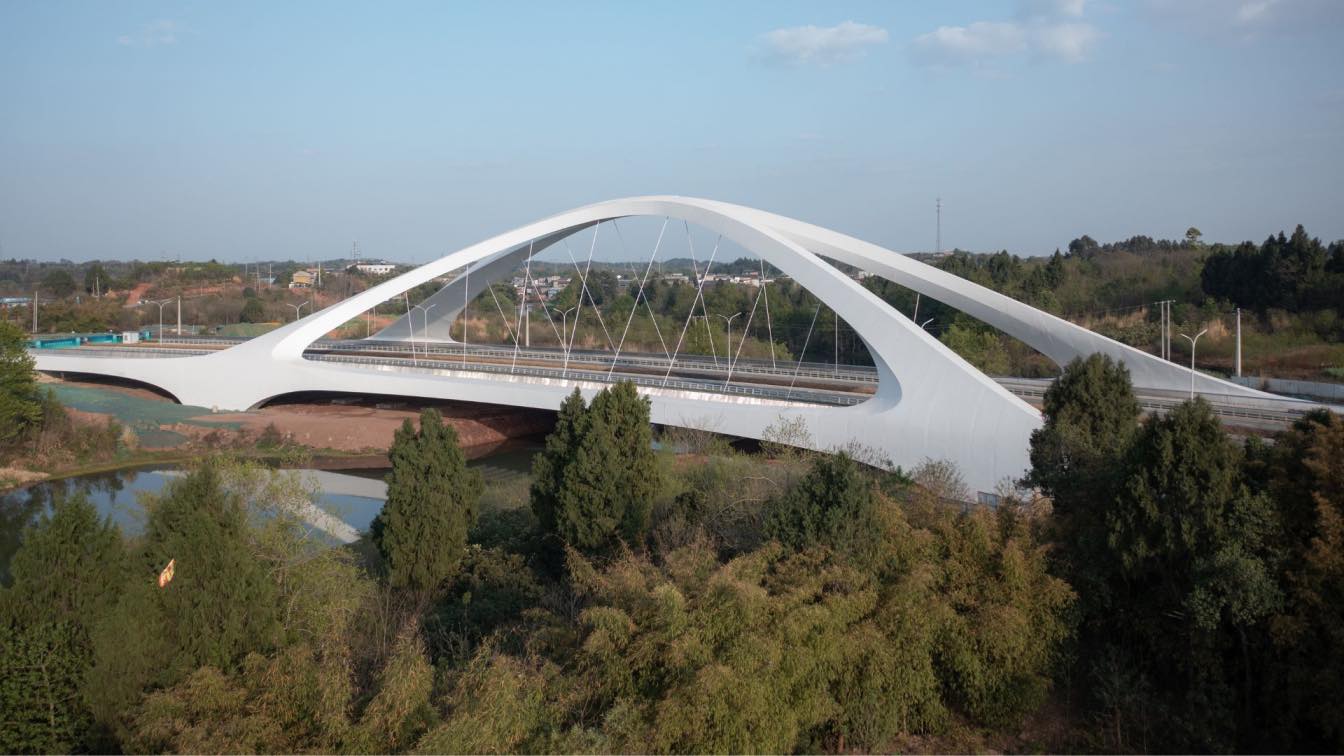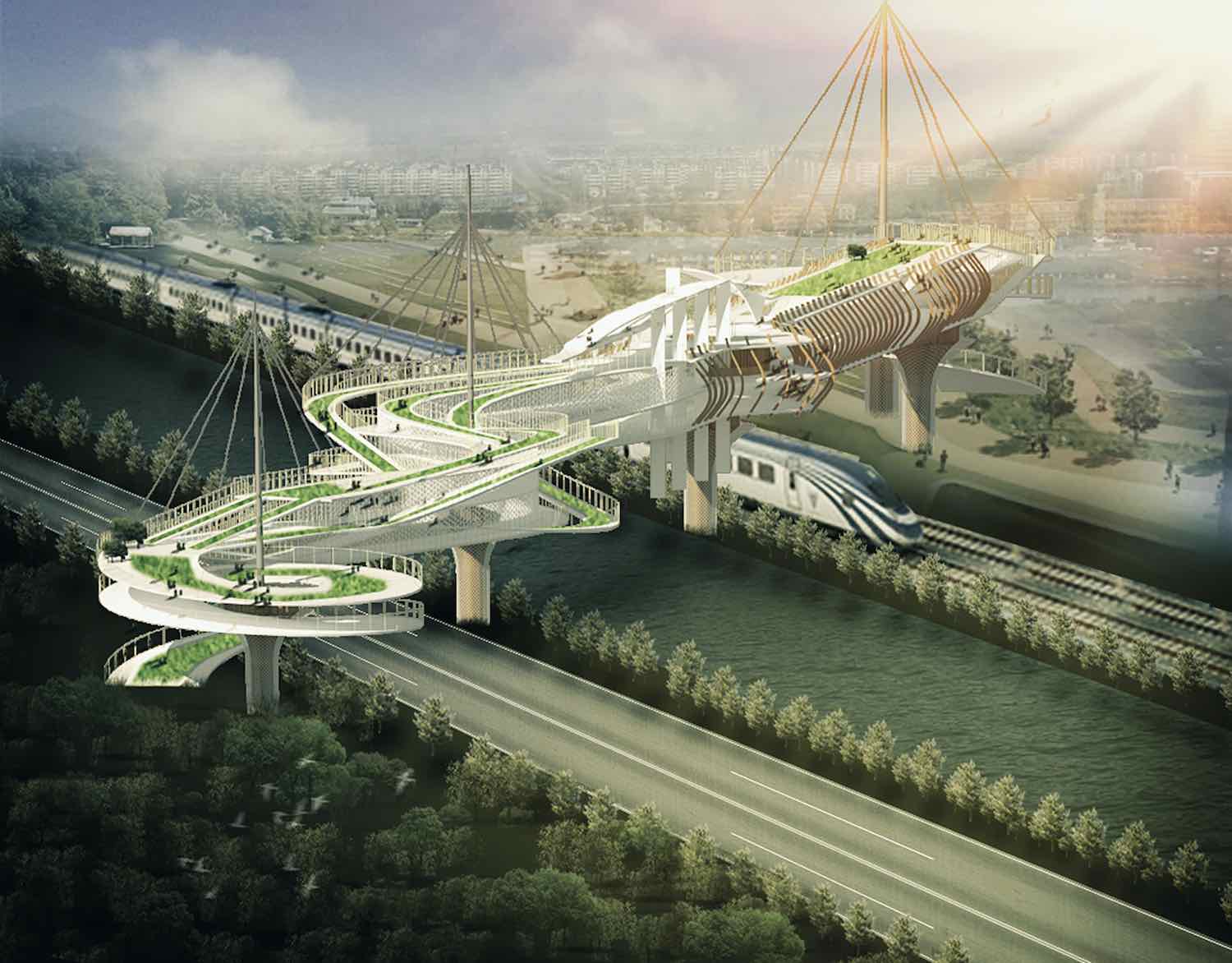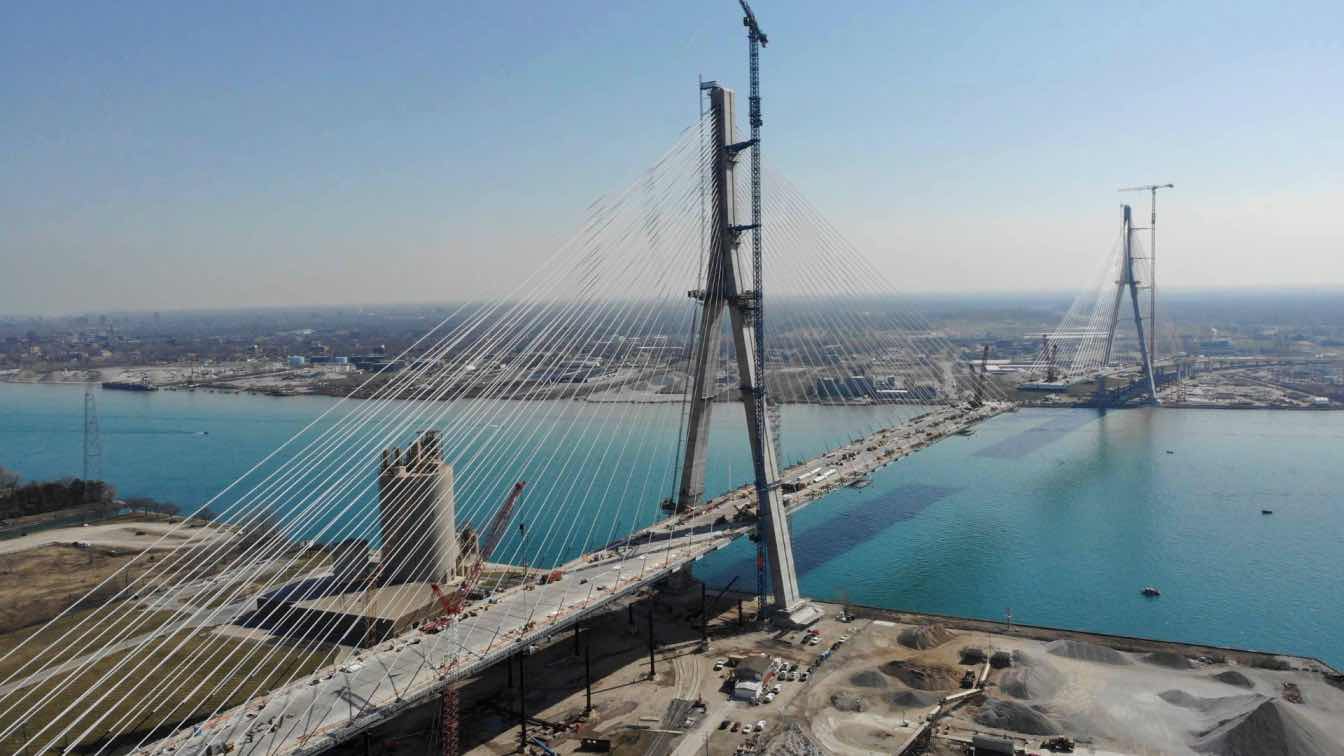The first in a series of bridges on Chengdu’s West Line Road, the new 295-metre Chengdu West First Bridge crosses the Jiangxi River, a tributary of the Tuojiang River in China’s Sichuan province.
With its 185-metre central span and 55-metre secondary spans reaching to the riverbanks, the Chengdu West First Bridge is a road, cycle and pedestrian bridge over the meandering Jiangxi River; enabling the West Line Road to become the western section of the Airport New Town ring-road and cycle route.
As arches provide the most efficient bridge structure for spans between 120-250 metres, this symmetrical bridge is composed of two primary steel arches that rise from either side of the road deck. As they rise, the arches lean together to touch tangentially at their crown, stabilising the structure from lateral wind forces.
The dynamic curvature of the bridge’s supporting piers and abutments taper into its primary arches and road deck, defining a sculptural landmark within Chengdu’s transport infrastructure.
Commissioned to build the bridge following the 2019 design competition, Zaha Hadid Architects (ZHA) used structural analysis software on the design’s digital model. Examining all material self-weight, superimposed dead load and traffic live loading, as well as environmental considerations of wind and temperature, this analysis ensured the structure and foundations have been designed to exceed the standards required for once-in-200-year weather events.

With a height to span ratio of approximately 1:6, the bridge’s arches rise to 30 metres and are tied together at their base by longitudinal box girders that run along theedge of the road deck. These ties resist the outward horizontal thrust of each arch and significantly reduce the horizontal loads on the bridge’s foundations.
Concrete abutments at either end of the bridge incorporate connectors linking the road deck to the West Line Road’s surface. With no foundations positioned in theJiangxi River, intermediate piers are located beneath the springing points of the arches on each riverbank.
The bridge’s bored piles and abutments were constructed using conventional in-situ reinforced concrete techniques. The steel box sections of each arch were prefabricatedin optimal dimensions for transportation and assembly on site. The edge box girder sections within the road deck include the cable anchorages. These sections were also prefabricated and delivered in sections to be spliced together with on-site welding.
The bridge’s prefabricated plate cross girders were delivered to the site and connected to the edge girders by a bolted cover plate splice connection. The concrete road deck has been constructed from precast panels fixed to the cross girders by in-situ concrete stich pours.
Mobile cranes lifted all prefabricated steelwork and precast concrete elements within the bridge’s short assembly schedule.
























Project Team
Client: Chengdu International Aerotropolis Group Construction and Development
Architect: Zaha Hadid Architects (ZHA)
ZHA Design: Patrik Schumacher
ZHA Project Directors: Charles Walker, Lei Zheng, Ed GaskinZHA Project Architect: Han-Hsun HsiehZHA Site Team: Lei Zheng, Han-Hsun HsiehZHA Project Team: Jan Klaska, Lei Zheng, Marina Dimopoulou, Stratis Georgiou, Hung-Da Chien, Han-Hsun Hsieh, Martha Masli, Stella Dourtmes, Charles Walker, Ed Gaskin
Consultants
Executive Architect: China Southwest Architectural Design & Research Institute
Local Architect: China Southwest Architectural Design & Research Institute Structural Engineers: Buro Happold, China Southwest Architectural Design & Research Institute Quantity Surveyor: China Southwest Architectural Design & Research Institute General Contractor: Sinohydro Bureau 7 Co., Ltd, China Huaxi Engineering Design and Construction Environmental Consultant: Shenzhen Pengdaxin Energy Environmental Protection Technology M&E Engineering: China Southwest Architectural Design & Research Institute MEP: China Southwest Architectural Design & Research Institute Transport Consultant: China Southwest Architectural Design & Research Institute Fire Engineer: China Southwest Architectural Design & Research Institute Landscape Consultant: Zaha Hadid ArchitectsLighting Design: Zaha Hadid ArchitectsSite Supervision: China Huaxi Engineering Design and Construction





